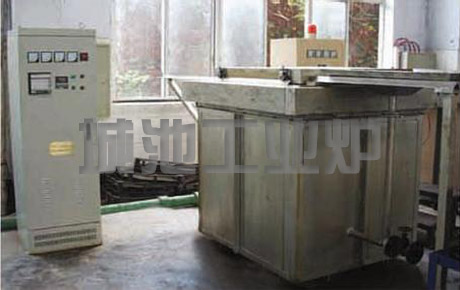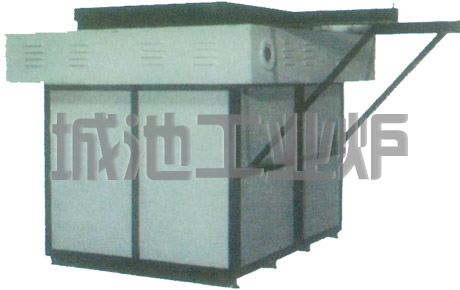Safety technology of heat treatment bath furnace
Keywords:Bath furnace,salt bath furnace,lead bath furnace,safety,heat treatment bath furnace,industrial furnace,lead bath quenching,heat treatment,lead bath,salt bath,heat treatment furnace,lead dust,quenching
Safety technology of heat treatment bath furnace
Heat treatment lead bath furnaces are ordered by the National Development and Reform Commission of the People's Republic of China, No. 40, "Guidance Catalogue for Industrial Structure Adjustment (2005 Version)" Article 10: Machinery 1. Heat treatment lead bath furnaces have been explicitly ordered to be eliminated equipment. However, there are still many companies still using heat treatment furnace products such as lead bath furnaces and salt bath furnaces. Now the safe use of heat treatment salt bath furnaces and lead bath furnaces is shared with heat treatment partners:
1. Process
Salt bath furnace uses molten salt as quenching heating medium, mostly internal heating type; lead bath furnace uses molten lead as quenching heating medium, using external heating type. The external heat source is outside the crucible. The heat is introduced into the medium through the crucible wall to melt it and heat up to the working temperature. Crucibles are mostly made of heat-resistant steel or heat-resistant cast iron. The wall thickness is mostly 20-30mm; it can also be welded from 5-10mm low carbon steel plate or stainless steel plate.
2. Occupational hazards
Pb has a specific gravity of 11.34, a melting point of 327 ° C, and a boiling point of 1525 ° C. When Pb is heated to 400-500 ℃, Pb vapor will escape. With the increase of temperature, Pb steam can be oxidized to Pb2O, PbO, Pb2O3 :, Pb3O4 in the air in turn and produce "lead smoke".
Statistics show that in industry, the most harmful to Pb is the process of melting lead that produces "lead smoke". The working temperature of the heat treatment lead bath furnace is as high as 800 ℃, therefore, "lead smoke" is more and the harm is greater.
The data reported that when the concentration of "lead smoke" in the air of the workshop reached 6.5mg / m3. At this time, it can only cause acute poisoning. Therefore, the "Design Hygiene Standards for Industrial Enterprises" stipulates that the maximum allowable concentration of "lead smoke" in the air of the workshop is 0.03mg / m3; "lead dust" is 0.05mg / m3; tetraethyl lead is 0.005mg / m3; lead sulfide It is 0.5mg / m3.
Pb poisoning is mostly chronic and difficult to diagnose. Typical cases are as follows:
A. Nervous system: Pb can damage motor nerves, and can cause muscle contraction to be out of control, resulting in "lead paralysis", which is called "wrist drop" in medicine.
B. Blood system: Pb affects the synthesis of hemoglobin, so anemia occurs when lead poisoning occurs. Pb can also cause skin blood vessels to contract and make patients pale, which is called "lead capacity" in medicine.
C. Digestive system: protein food residues accumulated between people's teeth, which produce H2S when spoiled. When H2S meets Pb, PbS precipitates, resulting in blue-black lines on the gingival margin, which is medically called "lead line".
"Wrist drop", "lead capacity", "lead line" are all obvious manifestations of lead poisoning.

Heat treatment bath safety
3. Protective measures
A. Ventilation and dust collection
In order to prevent "lead smoke" and "lead dust" from spreading in the workshop, effective local ventilation and comprehensive system ventilation should be adopted for the lead bath furnace. The extraction speed of the furnace side of the lead bath furnace should be about 0.5m / sec, and the exhaust air volume should be about 13000m3 / h. The residual air discharged into the atmosphere should be purified to avoid polluting the environment. The dust collection measures include bag dust collection, electric dust collection and water dust collection. Figure 14.11 is a schematic diagram of water dust collection.
B. Control lead temperature
Pb starts to release lead vapor when it is 400-500 ℃. As the temperature increases, lead vapor increases exponentially. Therefore, under the premise of satisfying the technical conditions and ensuring the quality of the product, the temperature of the molten lead should be reduced as much as possible.
C. Wet operation
Equipment, walls, floors, and tools that are easily contaminated by lead dust should be rinsed with water as much as possible without affecting the overall work, to keep it moist and clean, and not to cause lead dust to fly. For example, after heating and heat treatment of the steel wire in a lead bath furnace, water spray is often used for showering, and a special drainage ditch is also set underground in the wire winding machine, which is a typical wet operation.
D. Eliminate lead sources
For example, the commonly used recrystallization heat treatment temperature of high carbon steel wire is 480 ~ 560 ℃. Instead of melting lead, you can use the molten salt of the following components: CaCl2 (48%), BaCl2 (31%), NaCl (21%)
This component happens to be the eutectic component of the ternary phase diagram formed by the three salts. The eutectic point is 430 ° C and the specific gravity is 2.69.
After heating to the melting point, it melts completely without solid suspension. Since the melting point of each chloride salt is very high (CaCl2: 774 ° C; BaCl2 :, 958 ° C;
NaCl: 804 ° C), so there is very little volatilization in the above temperature range, which will not cause pollution. The result of the trial not only eliminated lead poisoning fundamentally, but also had stable quality, reduced cost and easy operation.
For the quenching process of some special steel wires, the original "lead bath quenching" can be changed to "boiling water quenching". That is, instead of using molten lead as a quenching agent, boiling water is used as a quenching agent. After the new process was put into production, not only the lead poisoning was eliminated, and the lead material was saved, but the quality of the steel wire reached the national standard, in which the toughness and roughness were higher than that of the lead bath quenched steel wire.
E. personal protection
Workers who are exposed to lead should wear filter-type lead smoke and lead dust masks, and replace or clean the filter materials regularly. In addition: work clothes should be cleaned regularly; it is forbidden to wear work clothes into the canteen; wash as required after work; adhere to the regular medical examination system.
More Safety technology of heat treatment bath furnace:http://www.industrial-furnace.com/articles/bath_furnace_safety.html




